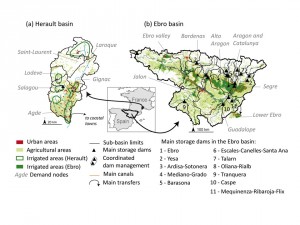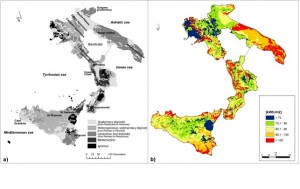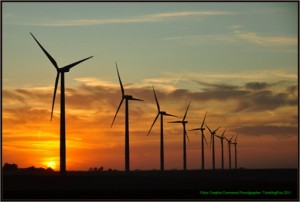If you are an Early Career Researcher or looking for a new research opportunity why not check out the EGU job site!?
Sustainability of water uses in managed hydrosystems: human- and climate-induced changes for the mid-21st century
Words on Wednesday aims at promoting interesting/fun/exciting publications on topics related to Energy, Resources and the Environment. If you would like to be featured on WoW, please send us a link of the paper, or your own post, ERE.Matters@gmail.com
****
Citation: Fabre, J., Ruelland, D., Dezetter, A., and Grouillet, B.: Sustainability of water uses in managed hydrosystems: human- and climate-induced changes for the mid-21st century, Hydrol. Earth Syst. Sci. Discuss., 12, 9247-9293, doi:10.5194/hessd-12-9247-2015, 2015.
Abstract. This paper assesses the sustainability of planned water uses in mesoscale river basins under multiple climate change scenarios, and contributes to determining the possible causes of unsustainability. We propose an assessment grounded in real-world water management issues, with water management scenarios built in collaboration with local water agencies. Furthermore we present an analysis through indicators that relate to management goals and present the implications of climate uncertainty for our results, furthering the significance of our study for water management. A modeling framework integrating hydro-climatic and human dynamics and accounting for interactions between resource and demand was developed and applied in two basins of different scales and with contrasting water uses: the Herault (2500 km2, France) and the Ebro (85 000 km2, Spain) basins. Natural streamflow was evaluated using a conceptual hydrological model. A demand-driven reservoir management model was designed to account for streamflow regulations from the main dams. Human water demand was estimated from time series of demographic, socio-economic and climatic data. Environmental flows were accounted for by defining streamflow thresholds under which withdrawals were strictly limited. Finally indicators comparing water availability to demand at strategic resource and demand nodes were computed. This framework was applied under different combinations of climatic and water use scenarios for the mid-21st century to differentiate the impacts of climate- and human-induced changes on streamflow and water balance. Results showed that objective monthly environmental flows would be guaranteed in current climate conditions in both basins, yet in several areas this could imply limiting human water uses more than once every five years. The impact of the tested climate projections on both water availability and demand could question the water allocations and environmental requirements currently planned for the coming decades. Water shortages for human use could become more frequent and intense, and the pressure on water resources and aquatic ecosystems could intensify. The causes of unsustainability vary across sub-basins and scenarios, and in most areas results are highly dependent on the climate change scenario.

Location, main water uses and water management characteristics of (a) the Herault
and (b) the Ebro basins. In the Herault basin, 6 sub-basins matching 6 demand nodes were
defined. In the Ebro basin, 20 sub-basins were selected for the simulation of water resources
and 8 demand nodes matching the main irrigation systems were defined.
How to assess geo-exchange potential for shallow geothermal energy at regional scale?
Words on Wednesday aims at promoting interesting/fun/exciting publications on topics related to Energy, Resources and the Environment. If you would like to be featured on WoW, please send us a link of the paper, or your own post, ERE.Matters@gmail.com
****
By Eloisa Di Sipio
Galgaro A., Di Sipio E., Teza G., Destro E., De Carli M., Chiesa S., Zarrella A., Emmi G., Manzella A. 2015. Empirical modeling of maps of geo-exchange potential for shallow geothermal energy at regional scale. Geothermics, 57, 173-186 doi.org/10.1016/j.geothermics.2015.06.017
In the frame of the economic crisis occurring since 2008 in Europe, the use of renewable energy resources is expected to increase in order to overcome the economic dependence on fossil fuels and ensuring energy supply for the European economic development.
Therefore, in the next future the use of geothermal resource both for power and heat generation is likely to increase, given its ability to meet part of the global energy needs and to produce low levels of greenhouse-gas emissions (GHG), reducing significantly CO2 emissions in the atmosphere.
To assess the geothermal energy exchanging ability of closed-loop Ground Source Heat Pump (GSHP) systems, a specific procedure able to combine ground and GSHP parameters was developed.
The methodology is based on different input parameters: i) the thermal conductivity of the ground, ii) the undisturbed ground temperature at 50 meters depth b.g.l. and iii) the monthly energy loads of the building considering a standard case study. The maximum energy requirements in a year has been estimated for a reference residential building (100 m2) with standard insulation and transmittance, according to the normative UNI EN ISO 6946, and usual requirements on heat pump efficiency (coefficient of heating performance COP =4.5 and cooling energy efficiency ratio EER = 4.0). The parameter adopted to link the ground thermal properties to the building thermal requirements is the total length (Ltot) of the group of vertical borehole heat exchangers (BHE) required to satisfy the energy building needs of the reference building.
Since the modeling has empirical character, it was applied to four regions of Southern Italy within the VIGOR Project (http://www.vigor-geotermia.it/). The obtained geo-exchange potential maps are conceived for energy planning purposes at regional scale and, due to the complexity of the different system components (house type, geological conditions, heating/cooling needs), provide a first and rough estimation of the geo-exchange potential of the areas taken into consideration. They do not replace detailed site-specific analyses, which, instead, are necessary for GSHP design purposes.
However, the proposed methodology can be easily exported in other contexts were use of shallow geothermal resources is planned. In fact the maps show the thermal energy that could be exchanged through the unit area by BHEs for a recent or a recently renovated building, taking into account the local geological and climatic conditions. Higher values of the geo-exchange potential identify more suitable place for shallow geothermal exploitation, implying a lower total length of the BHE field required for the GSHP system and then lower installation costs.

Main geological features (a) and geo-exchange potential maps for shallow closed loop systems (b) of four Southern Italy regions.
Eloisa Di Sipio is currently a post-doctoral researcher at the Institute of Geosciences and Earth Resources (IGG) of the National Research Council (CNR), Italy. Awarded in 2015 of a Marie Sklodowska Curie (MSC) fellowship, she will start the research cooperation with the Friedrich-Alexander-Universität, Germany, in November 2015. Main research interests concern shallow geothermal energy resources, hydro-geological topics and petrophysical characterization of lithological materials. She is involved also in dissemination and outreach activities addressed to general public. Eloisa is currently chair of the Early Career Hydrogeologist Network – Italy (ECHN-Italy) and member of the International Geothermal Association (IGA).
For more information, you can contact her at eloisa.disipio@gmail.com, or follow her on the LinkedIn or ResearchGate pages.
Data4Sustain – a new webGIS renewable energy feasibility tool
Words on Wednesday aims at promoting interesting/fun/exciting publications on topics related to Energy, Resources and the Environment. If you would like to be featured on WoW, please send us a link of the paper, or your own post, at ERE.Matters@gmail.com.
***
Blog by Darren Beriro, British Geological Survey
British Geological Survey (BGS) and consortium members Land Quality Management, Nottingham Energy Partnership, Nottingham Geospatial Institute, Positive Homes and University of Nottingham Estates Office are working on a new project called Data4Sustain. The project is being led by LQM and has attracted prestigious funding from UK’s Innovation agency, Innovate UK[1] (Solving Urban Challenges with Data – Feasibility Studies[2]) and the Natural Environment Research Council (NERC). Over the next 12 months, Data4Sutain will produce a prototype web-based geographical information system (webGIS) for landowners, developers, community groups, local authorities, and their advisors to conduct renewable energy feasibility studies.
The prototype webGIS will display information about when a renewable energy technology (e.g. geothermal, hydro, wind, solar) is expected to be viable at a given site or building. The webGIS will utilise urban datasets and combine these with technology specific ‘operating windows’ to identify the most attractive location for new installations. As the renewable energy sector matures there is increasing expectation (i.e. removal of FITs, etc) for efficient decision-making and investment. Data4Sustain aims is to facilitate this process in both the short and long-term siting of such technologies.
If you are interested in contacting the project team please email or call LQM on 0115 7484080. To register your interest in Data4Sustain and keep up to date with the latest developments please sign-up to the Data4Sustain mailing list.
[1] Innovate UK is the new name for the Technology Strategy Board – the UK’s innovation agency. Taking a new idea to market is a challenge. Innovate UK funds, supports and connects innovative businesses through a unique mix of people and programmes to accelerate sustainable economic growth. For further information visit https://www.gov.uk/government/organisations/innovate-uk
[2] Feasibility Studies is a single-company or collaborative R&D grant scheme run by Innovate UK that allows businesses the opportunity to test an innovative idea and its feasibility to be developed and eventually taken to market. Feasibility studies are a way for companies to carry out exploratory studies which could lead to the development of new products, processes, models, experiences or services. The study could involve for instance investigating the technical feasibility of a new idea.
https://www.gov.uk/innovation-get-details-about-innovate-uk-funding-competitions#feasibility-studies


